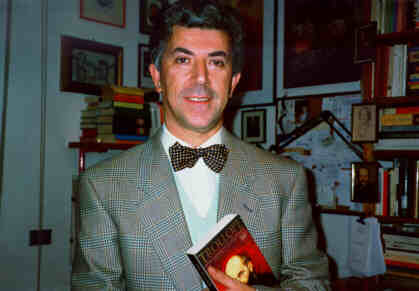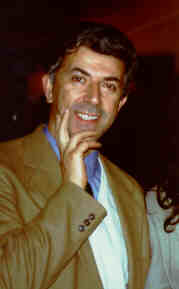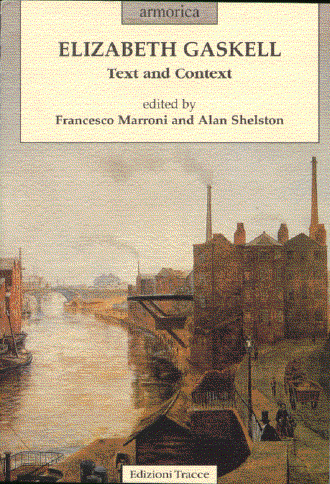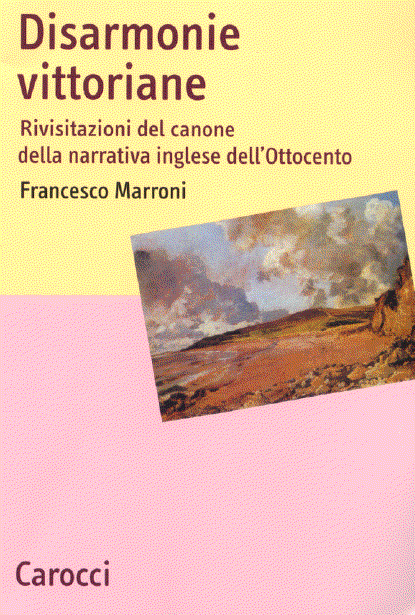

Just after my degree in English, I started my academic career as a research assistant whose main research field was Victorian fiction. I was only 23 then and my favourite novels were almost all written by English and American twentieth-century writers. In passing, I had written my dissertation on John Steinbeck and American literature was my real passion. What response did the reading of such novels as Mary Barton, Alton Locke and Shirley produce in my mind? To put it briefly, these Victorian novels stimulated immediately my literary sensibility and it was Elizabeth Gaskell that captured my imagination, even though the works of Charlotte Brontë and Charles Kingsley were as important for my future research programme. After reading Mary Baron I passed effortlessly to North and South with an enthusiasm which amounted almost to worship for a novelist whose themes and language seemed so near to my idea of Great Literature. My predilection for Gaskell was further enhanced by her letters - the 1966 volume splendidly edited by Prof. Arthur Pollard and Prof. J.A.V. Chapple is still on my Gaskell shelf as a treasure-trove - I was lucky enough to find it in the early seventies and now I regard this edition as the most important contribution to Gaskell studies. Needless to say, my first published article was on those Gaskell novels I had enthusiastically read and studied ("Mrs. Gaskell alla ricerca di un'armonia sociale. Riflessioni su 'Mary Barton' and 'North e South'", SÏ & No, 4, March 1975, pp. 63-103). This considerably long essay of mine was the first Italian article openly declaring her great artistic value and her crucially innovative role in the Victorian literary scene. This contribution, though, was only the first step towards the discovery of her fiction, which constantly attracted my attention in the years which I spent researching on George Eliot and Charlotte Brontë and my efforts resulted in a full-length study on Eliot and a monograph on Jane Eyre both published in 1980. Yes, I had made my decisions - the Victorian world was now my idÈe fixÈe and my first courses as lecturer at "Gabriele d'Annunzio" University (Pescara, Italy) were on Elizabeth Gaskell and George Eliot. This is going back to the academic year 1979-1980.
In 1984, while I was trying to write a second more articulate draft of my book on Gaskell and spending long hours at the University Library of Cambridge dissatisfied with my first 300-page manuscript, I was possessed by the idea that I should visit Manchester and Knutsford as a sort of pilgrimage before going back home. In the meantime, the publisher, not knowing my intention to re-write what was the first monograph on Gaskell's fiction written by an Italian scholar, expected to print the above version as previously agreed. So, in August 1984 I found myself outside Knutsford railway station wondering about where I should direct my steps. No sooner had I overcome my scholarly hesitation than I found myself in front of Brook Street Chapel while, in a gorgeous Sunday morning, people were gathering after Sunday service. I was lucky enough to meet the late Mr. A. F. Johnston of Knutsford who was so kind as to inform the late Mrs. Mary F. Thwaite of my researches and enthusiasm for Gaskell and her world. It is very difficult for me to find words to express the generous and stimulating way Mrs. Thwaite offered me her assistance and hospitality - thanks to her help my book took its final shape and so, after a couple of years, "La fabbrica nella valle. Saggio sulla narrativa di Elizabeth Gaskell" was published in the prestigious series "La Biblioteca di Studi Inglese" (Bari, Adriatica Editrice, 1987). My book produced a vivid response in the Italian academic panorama which was positively stirred into a discovery of Gaskell's fiction. The many translations which were published in the following years enhanced the scholarly interest for her work and life and, at once, introduced her to an ampler readership. My own translation of "Cousin Phillis" ('Mia cugina Phillis', with parallel text, Venice, Marsilio, 1993) was reviewed in many journals and newspapers and it was so successful that the publisher printed a pocket edition in 1995 (but without the original text and editorial apparatus). Needless to say, publishers were readier to print her short stories than her novels, owing to greater book-length costs and also because tales seem to be more in line with our frantic cash-and-carry world.
I remember with great emotion my first participation at a meeting as a member of The Gaskell Society, which was founded in October 1985, just one year after my first introduction to the Gaskell world. Here I wish to give very special thanks to Mrs Joan Leach of Knutsford, whose decisive impulse started the Gaskell Society; I have always regarded her as the natural leader and moral and lively fountainhead of our Society. So, it was on the 26th of April 1986 that Mr. J.G. Sharps gave a talk on "How I Became a Gaskellian" which proved to be very interesting indeed. For years I had regarded his book Mrs. Gaskell's Observation and Invention as a sort of treasure-trove for my research and now, at the meeting held in Manchester - exactly at 84 Plymouth Grove, Gaskell's Home -, I was elated by the idea of meeting such an outstanding personality and scholar in Gaskell studies. But my surprise reached its apex when, at the end of the meeting, I found myself elected as Vice-President of the Society with the gratifying motivation that I was "doing sterling work as Italian ambassador to Mrs Gaskell". Of course, over the years I have tried to honour my ambassadorship with as much promotional work as I could, both academically and as chief editor of "Merope" and "Rivista di Studi Vittoriani".
If Gaskell's work and life were practically limited to a very narrow group of Italian scholars in the early seventies, now I can testify to her being amply admired, studied and appreciated by numerous academics and readers at large. A steady flow of dissertations on her fiction is a sure index of her popularity and her name is more frequent now in conference circles and seminars than it was ten years ago. In this connection, I should mention the seminal contribution I received from John Chapple and Alan Shelston who have helped me greatly with their talks and lectures delivered in various Italian universities. Their papers on Gaskell in the second Victorian conference held in Pescara last April were more stimulating than this brief note can express. With this latest scholarly participation in the initiatives of the C.U.S.V.E. (Centre for Victorian and Edwardian Studies - University of Pescara), John Chapple and Alan Shelston offered a further testimony of the attention they reserve to the development of Gaskell studies abroad. Their encouragement and esteem are an important stimulating factor for my future research, together with the richness of their friendship which I deeply treasure. To both scholars - Chairman of the Society and editor of the Gaskell Society Journal - I wish to send my most vivid congratulations for the decision to work on a supplementary volume to the Pollard/Chapple edition which will collect 300 unpublished letters by Gaskell.
Of course, I cannot help but note at this point John Chapple's latest monumental contribution to the field: "Elizabeth Gaskell: The Early Years". The investigative research contained in this volume will surely prove to be fundamental in terms of future critical approaches to our authoress. Gaskell studies can now proudly cherish an invaluable tool that was previosuly sought without success. The wealth of material offered by this book will undoubtedly stimulate new and original readings of her entire fictional output.
As Vice-President of the Gaskell Society, I am glad to conclude this brief message of greetings highlighting the fact that some vivacious young scholars of my Department have recently been doing splendid work on Elizabeth Gaskell. Here I like to cite Marilena Saracino, Mariaconcetta Costantini and Anna Enrichetta Soccio who are studying various aspects of Gaskell's fiction and doing their best to give evidence of her greatness as novelist, biographer and short-story writer.

The Shadow of Dante: Elizabeth Gaskell and The Divine Comedy
E-mail: marroni @ ibmpe1.unich.it

Contents
Preface
In recent years the fiction of Elizabeth Gaskell has received increasing attention within the academic literary community. The contribution made by the major women writers to the development of the realist novel in England in the nineteenth century has been acknowledged since their first appearance, but traditionally Gaskell's achievement was held to be a lesser one. For Lord David Cecil, writing in 1934, she was "a minor artist . . . with a talent that is slight": for him her representative work was Cranford, a classic, but one with minority status. For a later generation of socio-historical critics, for whom Raymond Williams set the standard, the key text was Mary Barton, her novel of Manchester industrialism, but again it was seen as something of a special case, ultimately to be defined in terms of its limitations, rather than its merits. As compared with the major figures of Victorian realism - the Bronte sisters, for example, and yet more notably, George Eliot - Gaskell was felt to be a lesser figure, whose various individual achievements need not be brought together and reviewed as a substantial corpus of material. worthy of attention in its own right.
More recently this situation has changed. The title of Edgar Wright's Mrs Gaskell: the Basis for Reassessment (1965) was prophetic: it anticipated a number of scholarly enterprises of the 1960s and 70s, most notably the Pollard and Chapple edition of The Letters of Mrs Gaskell (1966), and John Geoffrey Sharps's Mrs Gaskell's Observation and Invention (1970) which have allowed for critical revision that has brought the full complexity of her achievement to the fore. Gaskell's fiction is not identifiable by the kind of single-minded agendas -whether thematic, as in the case of Charlotte Bronte, or theoretical as with George Eliot - that makes for a readily definable critical standpoint. What typifies her work is its versatility and variety, and that is as much as anything a consequence of the way in which she adapted herself to the economic demands of the Victorian literary scene. A natural story-teller, she responded readily to commissions above all by Dickens - who famously referred to her as "my dear Scheherazade" - after her first success with Mary Barton (1848), and it was this experience within the contexts of Victorian literary journalism that both established and defined her literary career. It accounts for the range of her work -stories, both short and long, novellas, essays, biography, as well as full-length novels - and it accounts also for its variable quality. But emphasis on this dimension should not blind us to the way in which her narrative art developed in both sophistication and substance. In her middle and later period she produced three outstanding novels - North and South (1855), Sylvia's Lovers (1863) and Wives and Daughters, unfinished at her death in 1865, as well as The Life of Charlotte Bronte (1857), one of the finest biographies in the language, and the novella Cousin Phillis (1863), felt by many of her critics to be her most perfect single work.
Within the last decade Elizabeth Gaskell has been the subject of a number of critical studies that have done justice to the full range of her work. It marks the extent of her reputation that important studies have appeared on the European continent and in the United States. In Italy Francesco Marroni's La fabbrica nella valle (1985) set up a tradition of Gaskell scholarship in that country that has been reinforced by a sequence of conferences, academic papers and reviews. This volume of essays, to which English and Italian scholars have contributed equally, is a further contribution to that tradition. Its various essays reflect a number of critical standpoints: in that sense Gaskell's own variety has been subjected to a variety of critical theory and practice which we hope will be an appropriate tribute to her own intellectual openness of mind.
Alan Shelston
Francesco Marroni

Premessa
Introduzione. L'ethos vittoriano e la disarmonia del mondo (Introduction. Victorian Ethos and the Disharmony of the World)
Bibliografia
Indice dei nomi
 Top of Page
Top of Page
 Mitsuharu Matsuoka's Home Page
Mitsuharu Matsuoka's Home Page